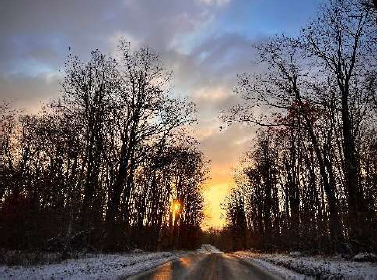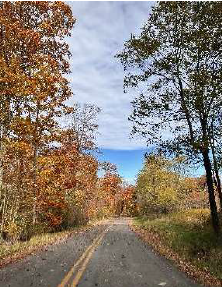Forest Overview
The Potomac-Garrett State Forest, the birthplace of forestry conservation in Maryland, is situated in southwestern Garrett County, Maryland. The generous donation of 1,917 acres by the Garrett Brothers in 1906 not only serves as the foundation of the Garrett State Forest but is the root of both Maryland's present Public Lands System and Forest Service. Mountain forests, streams and valleys make up almost 19,000 acres of this State Forest. The forest cover is predominantly a second growth mixed hardwood forest dominated by mixed oaks, sugar and red maples, black cherry, basswood, ash and birch. The geography of this area provides for a wide range of growing conditions from the harsh, wind and ice swept ridge tops of Backbone Mountain to the deep rich slopes above the North Branch of the Potomac River. Much of the State Forest lands contain excellent quality hardwood.
Potomac-Garrett State Forest has been intensively managed over the past nine decades. Forest harvest and grooming operations are undertaken to thin overstocked stands, to effectively deal with public safety concerns, to harvest mature or diseased/dying trees, to improve habitat for certain wildlife species, to assist and provide for certain research needs, to address aesthetic concerns and to increase the proportion of age/height diversity of forested stands.
Forest harvest operations are undertaken to utilize mature and dead/dying/diseased trees; thin overstocked stands; improve and diversify wildlife habitat; effectively correct public safety concerns and issues; reduce the forests vulnerability to insect attack, disease or wildfire hazard; facilitate certain approved research needs; improve certain aesthetic aspects of an area; and to improve the proportions of age classes and species diversity within stands and management blocks. This forest has been intensively managed since its inception, utilizing both even and uneven-aged techniques via selective removals and regeneration harvests. Early records indicate that as cut over land was acquired, foresters culled the forest, removing the poorly formed and damaged timber left behind in the wake of the cut and run practices employed by early timber speculators. By removing these undesirable trees, newly forming seedlings were released from competition and were thus cultured into the future growing stock of trees that we enjoy today. The benefits of this work have been significant including improved wildlife habitat diversity, improved forest health and more abundant mast production, improved utilization of gypsy moth damaged trees, reduced forest fire hazard, and the considerable financial contribution of management to the state and local economies as well as to those employed in the forest products industry.
Interpretation and Education
The Kindness Demonstration Area features a 1.25-mile self-guided hiking trail through 387 acres of forestland with signs explaining forest management and wildlife improvement practices.
Often referred to as the "birthplace of forestry and conservation in Maryland," this area is part of the Garrett brothers' original nearly 2,000-acre land donation which started Maryland's Forestry and Public Lands System.
See the forest through the trees and better understand how foresters manage our precious forest resources. Come out and enjoy a self-guided hike through the Kindness Demonstration Area.

